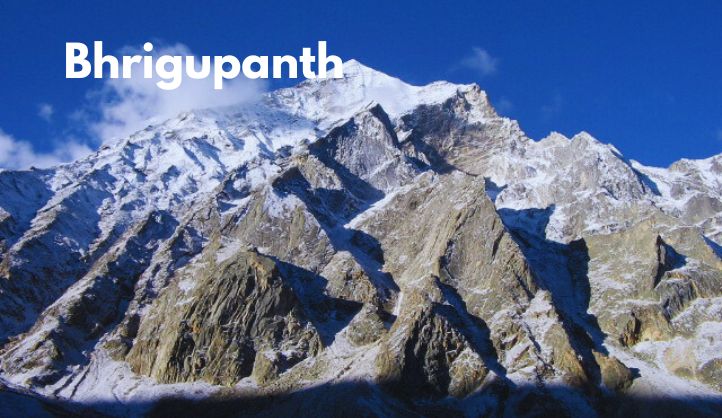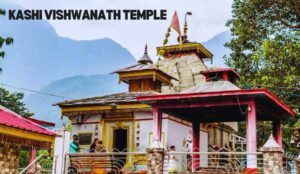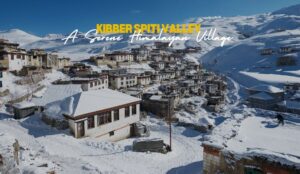In the lap of the majestic Himalayas, Bhrigupanth is a destination that captivates the hearts of trekkers and nature enthusiasts alike. Known for its pristine beauty and serene environment, Bhrigupanth offers a unique blend of adventure, spirituality, and natural splendor. This article delves into various aspects of Bhrigupanth, including its location, history, trekking routes, flora and fauna, cultural significance, and practical travel tips.
Location and Accessibility
Bhrigupanth is located in the Uttarkashi district of Uttarakhand, India. It lies in the northeastern part of the state, near the Indo-Tibetan border. The region is part of the Greater Himalayas, characterized by its rugged terrain, alpine meadows, and towering peaks. The closest major town to Bhrigupanth is Uttarkashi, which serves as a base for trekkers heading towards the peak.
Historical and Cultural Significance
Bhrigupanth, like many Himalayan peaks, is steeped in mythological and historical significance. According to local legends, Bhrigupanth is named after the sage Bhrigu, one of the revered seven Rishis (sages) in Hindu mythology. The peak is believed to be a place of meditation and spiritual retreat for these ancient sages.
In addition to its mythological importance, Bhrigupanth has been a significant site for explorers and mountaineers. The peak’s challenging terrain and unspoiled beauty have attracted adventurers from around the world, contributing to its growing reputation as a premier trekking destination.
Trekking Routes
Bhrigupanth offers several trekking routes, each providing a unique experience of the Himalayan wilderness. The treks vary in difficulty, duration, and landscape, catering to both novice and experienced trekkers.
1. The Classic Trek:
- Duration: 10-12 days
- Difficulty: Moderate to Challenging
- Route: The classic trek to Bhrigupanth begins in Uttarkashi. From Uttarkashi, trekkers head to the base camp at Dhamta, passing through picturesque villages and lush forests. The route ascends through alpine meadows and rugged terrain, eventually reaching the summit of Bhrigupanth. The return journey follows the same route.
2. The Shorter Trek:
- Duration: 7-9 days
- Difficulty: Moderate
- Route: This shorter trek is ideal for those with limited time but still wishing to experience the beauty of Bhrigupanth. The trek starts from Raithal, a small village near Uttarkashi, and follows a scenic route through dense forests and grassy slopes. The base camp is set at the beautiful meadow of Gidara. The summit push is challenging but rewarding, offering panoramic views of the surrounding peaks.
3. The Advanced Trek:
- Duration: 12-15 days
- Difficulty: Challenging to Difficult
- Route: This advanced trek is designed for seasoned trekkers looking for a more demanding adventure. The route includes steep ascents, glacier crossings, and high-altitude passes. Starting from the remote village of Barsu, trekkers traverse through uncharted territories, encountering rugged landscapes and pristine natural beauty. The summit offers breathtaking views of the Himalayan ranges.
Flora and Fauna
The region around Bhrigupanth is a biodiversity hotspot, with a rich variety of flora and fauna. The changing altitudes and climates create diverse ecosystems, from lush forests at lower elevations to alpine meadows and rocky terrain at higher altitudes.
Flora:
- Forests: The lower regions are covered with temperate forests, featuring oak, pine, and deodar trees. As one ascends, the forest cover gradually changes to alpine vegetation.
- Alpine Meadows: At higher elevations, trekkers encounter vibrant meadows dotted with wildflowers such as rhododendrons, primulas, and Himalayan blue poppies.
- Shrubs and Herbs: The rugged terrain is home to a variety of medicinal plants and shrubs, including the Himalayan medicinal herb, Saussurea costus.
Fauna:
- Mammals: The area is inhabited by wildlife such as the Himalayan black bear, musk deer, and the elusive snow leopard. Monkeys and various species of squirrels are also commonly sighted.
- Birds: Birdwatchers can spot species like the Himalayan griffon vulture, golden eagle, and the colorful Himalayan monal.
- Insects: The alpine meadows are buzzing with a variety of insects, including butterflies and bees that play a crucial role in pollination.
How to reach
- By Air: The nearest airport is Jolly Grant Airport in Dehradun, approximately 200 kilometers from Uttarkashi. From the airport, one can hire a taxi or take a bus to reach Uttarkashi.
- By Train: The nearest major railway station is Dehradun Railway Station. From Dehradun, travelers can take a bus or hire a taxi to reach Uttarkashi.
- By Road: Uttarkashi is well-connected by road to major cities like Dehradun, Haridwar, and Rishikesh. The journey by road offers breathtaking views of the Himalayan landscape.
Cultural and Spiritual Aspects
Bhrigupanth is not only a trekking destination but also holds cultural and spiritual significance for the local communities. The region is dotted with ancient temples and shrines dedicated to various deities. These sites are often visited by pilgrims seeking blessings and spiritual solace.
Local Festivals:
- Badrinath Festival: Celebrated in the nearby town of Badrinath, this festival attracts pilgrims and tourists alike, who come to seek the blessings of Lord Vishnu.
- Lohri Festival: The harvest festival celebrated in the region is marked by bonfires, traditional dances, and cultural performances.
Local Communities: The region around Bhrigupanth is home to several indigenous communities who have a deep connection with the land. Their traditional practices, folk songs, and dances add a unique cultural flavor to the trekking experience. Engaging with these communities provides insight into their way of life and their reverence for the natural world.
Practical Travel Tips
Traveling to Bhrigupanth requires careful planning and preparation. Here are some practical tips to ensure a smooth and enjoyable journey:
1. Permits and Regulations:
- Permits: Trekking in the region requires special permits, which can be obtained from the Forest Department or local authorities in Uttarkashi.
- Regulations: Follow local guidelines and respect the natural environment. Avoid littering and adhere to leave-no-trace principles.
2. Best Time to Visit:
- Summer (May-June): The weather is pleasant, and the trekking routes are accessible.
- Autumn (September-October): Ideal for clear skies and stable weather conditions.
- Winter: Not recommended due to heavy snowfall and extreme cold temperatures.
3. Gear and Equipment:
- Clothing: Wear layered clothing to adjust to varying temperatures. Include thermal wear, waterproof jackets, and sturdy trekking boots.
- Camping Gear: If camping, bring a high-quality tent, sleeping bag, and cooking equipment.
- Safety Gear: Carry a first aid kit, trekking poles, and navigational tools (map, compass, or GPS device).
4. Health and Safety:
- Acclimatization: Allow time for acclimatization to avoid altitude sickness. Drink plenty of water and avoid strenuous activities in the initial days.
- Guides and Porters: Hiring a local guide or porter can enhance your trekking experience and support local livelihoods.
5. Environmental Conservation:
- Waste Management: Pack out all trash and waste. Use eco-friendly products and avoid using single-use plastics.
- Respect Wildlife: Observe wildlife from a distance and avoid disturbing their natural habitat.
Conclusion
Bhrigupanth is a hidden gem in the Himalayan region, offering a blend of adventure, natural beauty, and cultural richness. Whether you are a seasoned trekker seeking a challenging ascent or a nature lover looking to explore unspoiled landscapes, Bhrigupanth has something for everyone. By respecting the local environment and communities, travelers can ensure that this pristine destination remains a treasured part of the Himalayan wilderness for generations to come.
FAQs about Bhrigupanth
1. What is Bhrigupanth?
Bhrigupanth is a picturesque peak located in the Uttarkashi district of Uttarakhand, India. It is part of the Greater Himalayas and is known for its stunning natural beauty, challenging trekking routes, and spiritual significance. The peak is named after the sage Bhrigu from Hindu mythology.
2. How do I reach Bhrigupanth?
- By Air: The nearest airport is Jolly Grant Airport in Dehradun. From there, you can take a taxi or bus to Uttarkashi.
- By Train: Dehradun Railway Station is the closest major railway station. You can travel from Dehradun to Uttarkashi by road.
- By Road: Uttarkashi is well-connected by road to cities like Dehradun, Haridwar, and Rishikesh. You can take a bus or hire a taxi to reach Uttarkashi.
3. What are the trekking routes to Bhrigupanth?
There are several trekking routes to Bhrigupanth:
- Classic Trek: Starts from Uttarkashi, passes through Dhamta, and reaches the summit. Duration: 10-12 days.
- Shorter Trek: Begins from Raithal, with a base camp at Gidara. Duration: 7-9 days.
- Advanced Trek: Begins from Barsu and includes challenging terrain and high-altitude passes. Duration: 12-15 days.
4. What is the best time to visit Bhrigupanth?
The best time to visit Bhrigupanth is during the summer months (May-June) and autumn (September-October). These periods offer favorable weather conditions for trekking. Winter is not recommended due to heavy snowfall and extreme cold temperatures.
5. What kind of flora and fauna can I expect to see?
The region around Bhrigupanth is rich in biodiversity:
- Flora: Includes oak, pine, deodar forests at lower elevations, alpine meadows with wildflowers such as rhododendrons and primulas at higher altitudes.
- Fauna: You might encounter Himalayan black bears, musk deer, snow leopards, golden eagles, Himalayan griffon vultures, and various butterflies.
6. Do I need a permit to trek to Bhrigupanth?
Yes, trekking to Bhrigupanth requires special permits. These can be obtained from the Forest Department or local authorities in Uttarkashi. Ensure that you follow local regulations and guidelines during your trek.
Related Posts





